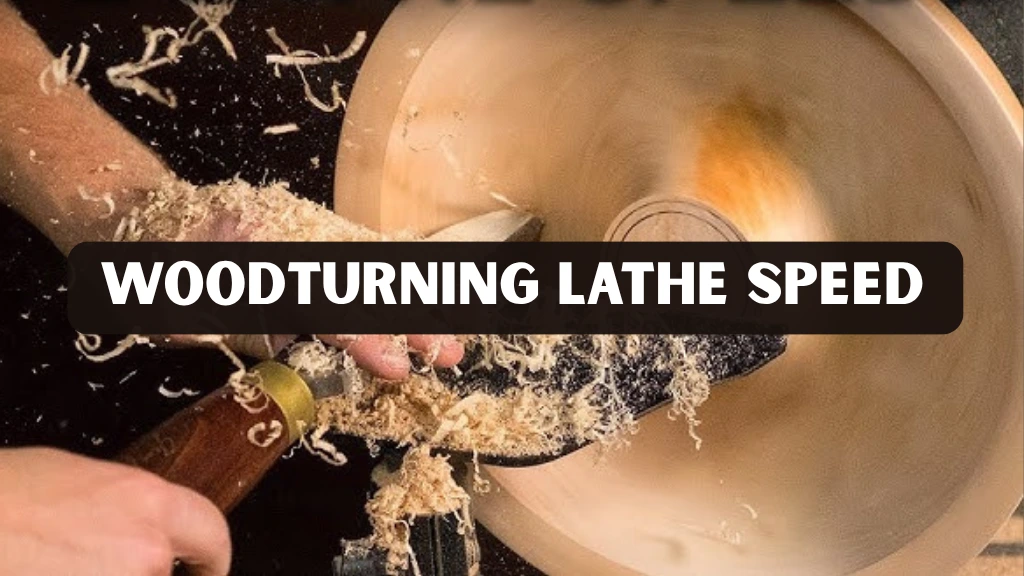In the world of woodturning, selecting the correct lathe speed is essential for achieving high-quality results and maintaining safety. The rotational speed directly affects how smoothly the cutting tool interacts with the wood, influencing the finish and precision of your projects. Incorrect speeds can cause uneven cuts, tool chatter, vibration, and even accidents, making proper speed selection a critical skill. Professional woodturners emphasize understanding these dynamics to produce consistent, reliable, and safe outcomes.
Woodturning demands a combination of technical knowledge, skill, and experience. Factors such as the size of the workpiece, the type of wood, and the condition of cutting tools all influence the ideal rotational speed. Adjusting the rotation according to these variables not only improves finished results but also prolongs tool life and reduces risk. By following expert guidance and proven techniques, both beginners and experienced craftsmen can confidently select speeds for any project, ensuring efficiency and safety.
Understanding Lathe Speed
Lathe speed, measured in revolutions per minute (RPM), refers to how fast the lathe’s spindle rotates the workpiece. This rate directly impacts the cutting action, surface finish, and overall efficiency of your woodworking projects. Selecting an inappropriate speed can lead to poor results, including tear-out, chipping, or uneven surfaces. Additionally, excessively high speeds can create dangerous conditions, particularly when working with unbalanced or heavy workpieces, while speeds that are too low may cause rough cuts, inefficient material removal, and additional wear on your tools.
Understanding rotational speed also involves recognizing the relationship between the diameter of the workpiece and the RPM. Larger pieces require slower rotation to reduce centrifugal force and maintain balance, while smaller items can often be turned at higher speeds without compromising safety. By considering these factors, woodturners can achieve smooth, consistent results and maintain a safe working environment. Mastering this aspect of woodturning requires both knowledge and hands-on experience, combining precision, skill, and observation.
Importance of Correct Rotation
The speed at which your lathe rotates the workpiece affects multiple aspects of woodworking, including surface finish, tool longevity, and safety. Properly selecting lathe speed ensures that the cutting tool engages the wood smoothly, producing cleaner and more uniform results. Smaller projects like pens or ornaments generally benefit from higher speeds to achieve a fine finish, while larger pieces such as bowls or platters require slower rotation to maintain control and prevent wobbling or uneven cuts.
The condition and lifespan of your tools are also influenced by how fast the workpiece spins. Cutting at excessively high RPMs can overheat tools, dull edges quickly, and create irregular cuts. On the other hand, using speeds that are too low may cause the tool to drag, generating friction and unnecessary wear. Ensuring an appropriate rotational rate is essential for prolonging tool life and maintaining the quality of your work.
Safety is the most critical factor affected by rotation. Operating at incorrect speeds can lead to accidents, particularly when turning large, unbalanced, or soft and brittle woods. Vibration, kickback, and tool slippage are common hazards associated with improper speed selection. By understanding and applying correct rotational practices, woodturners can create a safer workshop environment while achieving precise and professional results.
Calculating Safe Speeds
A widely recognized method for determining safe lathe operation is the 6,000 to 9,000 rule. This guideline is based on multiplying the diameter of your workpiece (in inches) by the RPM to ensure the lathe operates within a safe range. For example, a 10-inch bowl should ideally be turned at a speed between 600 and 900 RPM. This calculation helps prevent excessive centrifugal force, reduces vibration, and ensures that the cutting tool can engage the wood effectively.
The formula for calculating minimum and maximum safe RPM is straightforward. Divide 6,000 by the diameter of your workpiece to determine the minimum safe speed, and divide 9,000 by the diameter to determine the maximum. For a 12-inch bowl, the minimum RPM would be 500 (6,000 ÷ 12), while the maximum would be 750 RPM (9,000 ÷ 12). These calculations provide a practical framework for safely selecting speeds for most woodworking projects.
For exceptionally large workpieces over 24 inches in diameter, consult lathe speed charts or manufacturer specifications. These resources give guidance for larger diameters and heavier materials. Following them helps you complete advanced woodturning projects safely and efficiently.
Factors Affecting Speed Selection
Several factors influence the optimal rotational speed for a woodworking project, including the size of the workpiece, the type of wood, the condition of the tools, and lathe stability. Each element interacts with the others, making it essential to evaluate the overall setup before selecting the correct speed. Considering all variables ensures both safety and quality in the finished piece, allowing woodturners to achieve consistent and reliable results.
Larger workpieces require slower rotation to minimize vibration and maintain balance. Turning heavy or unbalanced pieces at high speeds can create dangerous centrifugal forces, causing the wood to wobble, shift, or even fly off the lathe. You can rotate smaller pieces faster to achieve smoother finishes without sacrificing control, which highlights the importance of making size specific adjustments for safety and precision.
The density and moisture content of the wood also significantly affect cutting performance. Hardwoods such as maple and oak can tolerate higher speeds, while softer or spalted woods require slower handling to prevent tearing or damage. Sharp, well-maintained tools produce cleaner cuts and reduce the risk of accidents, while a stable, properly secured lathe minimizes vibration and improves control. Together, these factors ensure woodworking projects are completed safely, efficiently, and to a professional standard.
Case Study Optimizing Speed in Bowl Turning
To illustrate the practical importance of selecting the correct speed, consider professional woodturner Sarah Thompson, who specializes in crafting large wooden bowls. While working on a 16-inch diameter maple bowl, she initially set her lathe at 1,200 RPM, assuming a higher speed would produce a smoother finish. Almost immediately, excessive vibration and minor chipping appeared along the edges, showing the speed was too high. After reassessing with the 6,000–9,000 rule, she reduced the speed to 500–600 RPM.
This adjustment drastically improved control, minimized vibration, and allowed her tools to produce a clean, uniform surface. Sarah also noted that the density of the wood influenced the ideal speed, with maple requiring slower rotation to protect her tools. By combining proper calculations with careful observation, she enhanced safety and tool longevity. This case clearly demonstrates that understanding and adjusting rotational speed is essential for high-quality woodworking results.
Practical Advice for Turning Projects
Starting at a lower speed is always advisable, gradually increasing RPM while assessing the balance and stability of the workpiece. Monitoring vibration during turning is critical, as excessive movement indicates the need to reduce speed to maintain control and prevent accidents. Using a tachometer or built-in RPM display allows for precise adjustments, ensuring the lathe operates within safe and effective ranges. Routine maintenance of both the lathe and cutting tools further supports consistent performance and prolongs tool life.
Woodturners should also pay attention to the “feel” of rotation during turning. Experienced craftsmen observe how the tool interacts with the wood at different speeds, making adjustments to maintain smooth cuts. Advanced projects require understanding how different wood types respond, with hardwoods tolerating higher speeds and softer or defective woods requiring more caution. Combining practical observation with calculations and manufacturer guidance ensures both precision and safety in woodworking.
Conclusion
Understanding and mastering lathe speed is crucial for achieving high-quality and safe woodworking results. By taking into account factors such as workpiece size, wood type, tool condition, and lathe stability, woodturners can select speeds that optimize both efficiency and craftsmanship. Observing the behavior of the workpiece and following the 6,000 to 9,000 rule ensures you complete projects accurately and safely. Regular tool maintenance, careful monitoring, and learning from professional resources further enhance skills, confidence, and overall results.
Frequently Asked Questions
What is the maximum safe RPM for woodturning?
The maximum safe RPM varies depending on the size of the workpiece, the type of wood, and the condition of the lathe and tools. By adhering to the 6,000 to 9,000 rule and consulting lathe-specific guidelines, woodturners can operate safely without compromising quality.
Can I turn a 24-inch bowl on my lathe?
Turning a 24-inch bowl requires a lathe capable of supporting large diameters. Ensure that the lathe’s specifications match the size of the project and consult manufacturer charts or expert resources to determine safe speeds.
How do I know if my workpiece is unbalanced?
Indicators of an unbalanced workpiece include unusual vibration, inconsistent cuts, or audible noise during turning. Balancing the piece before starting is essential for safety and achieving a smooth finish.
Are speed lathe charts reliable?
Lathe machine speed charts provide general guidance and are particularly useful for beginners.




